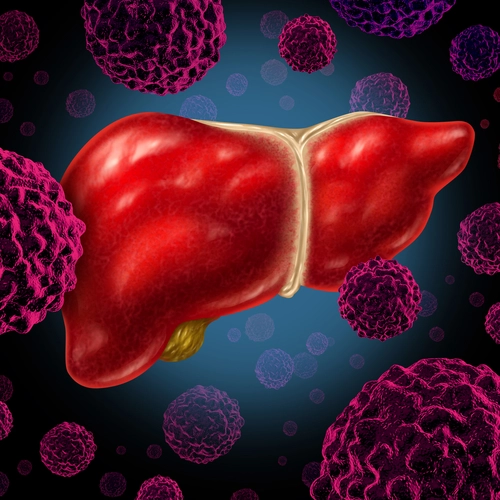Primary Care Coding Alert
Follow These Steps For Smooth Osteoarthritis Coding
And get clarification on the different terms associated with the condition. According to the Centers for Disease Control and Prevention (CDC), the term “arthritis” refers to over 100 different conditions (Source: www.cdc.gov/arthritis/types/index.html). It’s such a common condition that just about everyone knows it affects the joints and can be painful. But common knowledge doesn’t extend to coding. Osteoarthritis (OA) is one of the most seen arthritis types in primary care practices, so that’s what we’ll focus on here. Follow along as we help you navigate the world of OA coding. Condition refresh: OA is a type of arthritis that occurs when the cartilage that cushions the ends of the bones in the joints gradually deteriorates, causing the bones to rub together. This can cause pain, stiffness, and loss of joint movement. Step 1: Understand the Terminology First, let’s clear up a few terms. Confusingly, even though they’re not the same, “in the U.S., arthritis is also referred to as ‘osteoarthritis,’ and the terms are used interchangeably,” says Melanie Witt, RN, CPC, MA, an independent coding expert based in Guadalupita, New Mexico. This explains why “the default for ‘arthritis, unspecified’ is ‘osteoarthritis, unspecified site,’” according to AHA Coding Clinic® for ICD-10-CM (Vol. 3, No. 4, 2016), and why the primary code identified for “Arthritis” in the ICD-10 index is M19.90 (Unspecified osteoarthritis, unspecified site). Thus, you would report M19.90 “any time the physician simply indicates the patient has arthritis,” according to Witt. Here are a few more terms you should understand that will help you come to the appropriate OA codes: Primary osteoarthritis: This type of OA “develops over time with degeneration, inflammation, and just plain wear and tear to the joint,” explains Kaitlyn Bohrer, COSC, of Eastside Orthopedics & Sports Medicine in Milwaukie, Oregon. Secondary osteoarthritis: Primary OA occurs just due to wear and tear, but secondary OA “is caused by a known reason or consequence,” Bohrer explains. Underlying conditions such as obesity, genetics, inactivity, and a large inventory of other diseases are among the primary conditions and diagnoses that contribute to secondary OA. Post-traumatic osteoarthritis: Post-traumatic OA is a subtype of secondary OA. The condition “is contributory to a particular trauma or injury such as a subsequent fracture to a bone after playing a sport or an injury due to a car accident,” Bohrer says. Dysplastic osteoarthritis: This OA type is specific to the hips and occurs over time when the hip is not in alignment. Misalignment causes the cartilage to wear down and leads to OA in that joint. Step 2: See How Location and OA Type Dictate Code Choice ICD-10 positions OA codes from M15.- (Polyosteoarthritis) to M19- (Other and unspecified osteoarthritis). The codes are essentially organized by type of OA and location affected. M15-: Report codes from this set for polyosteoarthritis, which affects multiple joints. This type of OA “develops over time with degeneration, inflammation, and just plain wear and tear to the joint,” explains Bohrer. Which specific code you select depends on the nature of the condition (e.g., primary, secondary, or unspecified) and how it manifests (e.g., as Heberden’s or Bouchard’s nodes). You’ll only need to code to the fourth character for this group. M16- (Osteoarthritis of hip): These codes are for patients whose OA affects the hip. Like M15-, it’s broken down into primary, secondary, or unspecified codes (including codes for specific kinds of secondary osteoarthritis (e.g., post-traumatic)), but for these, you also need to take laterality into consideration. This requires you code to the fifth character unless the condition is bilateral, meaning it affects both sides of the body. M17- and M18- (Osteoarthritis of Knee/first carpometacarpal joint): These two groups mirror the organization of M16-, the shoulder, elbow, wrist, hand, ankle and foot, or other site. When you look at this group, you’ll notice that it requires you code to the sixth character to account for type, anatomical location, and laterality or unspecified. For example: The rest of the group is organized like this as well, with each parent code branching into more specific codes for the different permutations: M19.0- (Primary osteoarthritis of other joints), M19.1- (Post-traumatic osteoarthritis of other joints), M19.2- (Secondary osteoarthritis of other joints), M19.9- (Osteoarthritis, unspecified site). The unspecified group of codes are broken down to the fifth character by type. Coding alert: As you’ve probably noticed, M19.- does not contain codes for bilaterality. Should your provider document that the patient has bilateral arthritis in a specific anatomical location, you should follow ICD-10 general coding guideline I.B.13, which states, in part, “If no bilateral code is provided and the condition is bilateral, assign separate codes for both the left and right side.” Step 3: Report Primary Condition With Secondary OA If the patient’s OA is secondary to another condition, you’ll need to add another step for complete coding. For example, let’s say an obese 48-year-old male patient complains of joint pain in the right knee. Your provider determines the patient has secondary OA in the right knee joint due to the patient’s obesity. The OA code that fits best here is M17.5 (Other unilateral secondary osteoarthritis of knee). Like the M16 codes, the only M17.- codes that specify laterality are the codes for primary or post-traumatic OA of the knee. For secondary OA of the knee, your only choices are the “other” codes for unilaterality or bilaterality (M17.5), or the unspecified code (M17.9). As the knee (right) and the type (secondary) in this example are specified, and as the patient does not have the pain in both knees, M17.5 is really the only choice you have in this case. Because the osteoarthritis is secondary to obesity, which is the primary condition, you would report both M17.5 (Other unilateral secondary osteoarthritis of knee) and an appropriate code for the obesity, such as E66.01 (Morbid (severe) obesity due to excess calories).

Related Articles
Primary Care Coding Alert
- Condition Spotlight:
Follow These Steps For Smooth Osteoarthritis Coding
And get clarification on the different terms associated with the condition. According to the Centers [...] - Pediatric Coding:
Familiarize Yourself With These Frequently Used Codes for Kids
Also: get clarification on the differences between screens and tests. As primary care coders, you [...] - ICD-10 Coding:
Unlock SDoH Coding Success with These Tips
Plus: get a sneak peek at the updated SDoH guidelines. Last month, in issue 25, [...] - You Be the Coder:
Determine Whether to Code Dementia With Alzheimer’s Diagnosis
Question: Dementia is a symptom of Alzheimer’s, so does that mean I can’t code them [...] - Reader Questions:
Look to 2024 For ICD-10’s Newest Military History Code
Question: One of our new patients is retired from the military, which came up during [...] - Reader Questions:
Get an Advanced Look at Three New COPD Codes
Question: We see a lot of elderly patients in our practice, and many of them [...]




